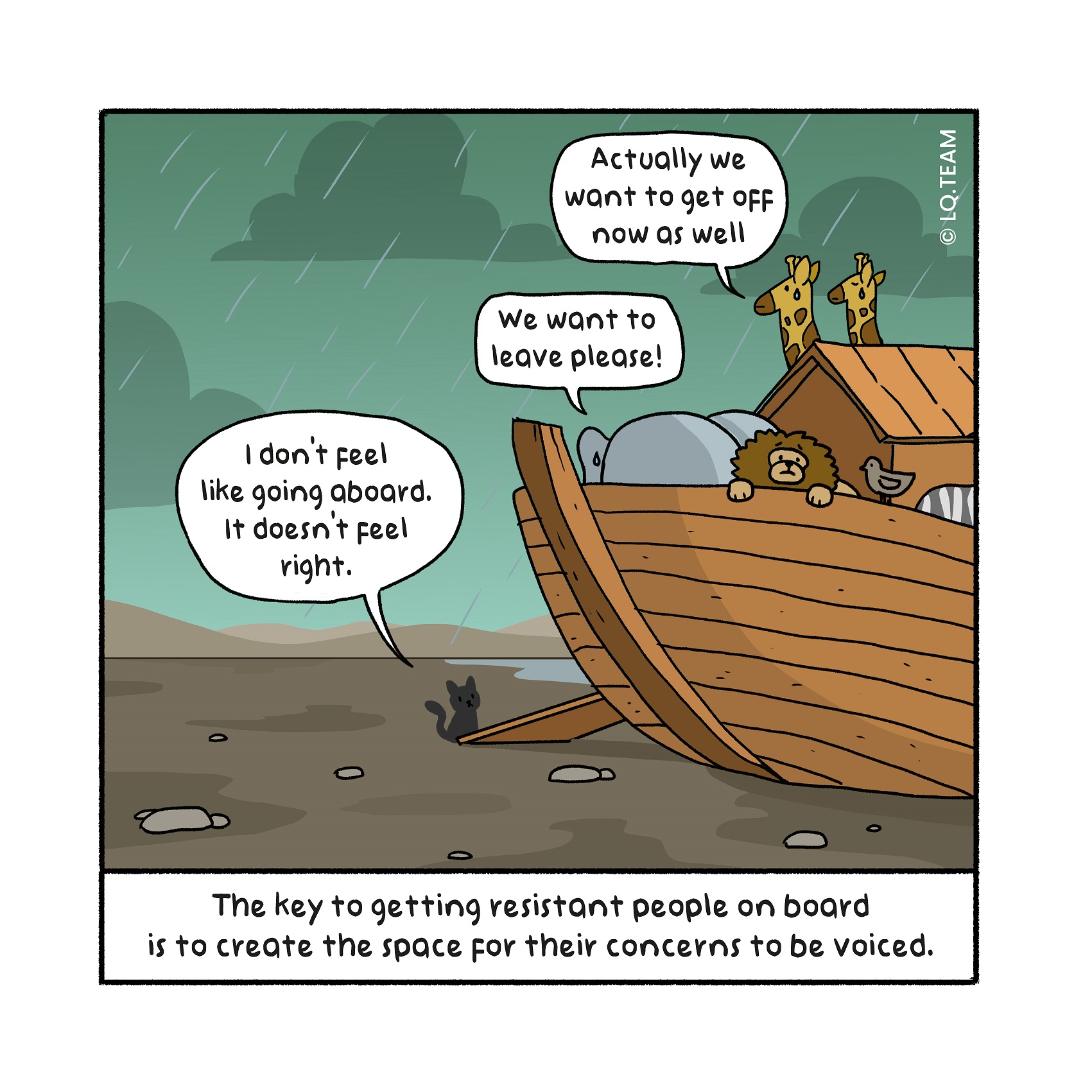
Nut to crack: How do you get a resisting group on board?
You may recall a comparable moment: one person speaks negatively in a group about a planned organisational change, and then this person receives support from many vocal supporters, while the people who are neutral or in favour are silent. An example such as this means that you may not be keen to look for real resistance or have difficult group conversations. The other side of the coin is that where fear or negativity is present under the surface in groups and has no structured way out, you will experience obstructions in the change process. Usually, you cannot solve this by only having one-to-one conversations. The question is, therefore: how do you put the correct res- ponse to the proposed change on the agenda, where there is room for both the pros and the cons to be discussed, and people feel heard and understood without derailing the change process?
Nutcracker: Pay attention first to the cons, then to the pros
When change presents itself and causes stress, primal fight or flight respons- es are triggered in humans. This is human nature. It makes us, whether we like it or not, initially think in terms of problems and what might go wrong. The great thing is that we can also think about possibilities and opportuni- ties again as soon as we can voice our concerns. This gives us emotional space.4 Depending on our life experiences and how we are programmed, this process has different degrees of intensity in every person, making it seem as if one person reacts positively to change and the other negatively. If the change impacts many employees, you can be sure to receive reactions at both extremes. If you don’t provide a structured way to let the responses and associated emotions out, they will typically continue to simmer below the surface. In many cases, it is wise to get these true beliefs to the surface in a structured way. This can also be done via a group process. However, this does require clear rules.
After you have created the change story at the group level, it helps to first spend time on the anticipated risks and drawbacks in the group; what could be lost, and what could go wrong. That may sound counterintuitive, yet it is precisely that which creates emotional space. Then spend time on the op- portunities and possibilities and how you can build on the success already achieved.
By exploring both sides in a structured way, within a limited timeframe, you allow everyone to explore and understand both the optimistic and pessimistic sides, and can then move forward with a greater sense of reality as a group. The following tool can help guide this type of group discussion.5 The example describes how such an approach could take shape in practice.
Real-life example: Tear down, then build up
A manager of a public organisation is getting signals that most executives do not believe in the announced fiveyear plan. She wants to raise this at a conference with these people. How does she defuse the situation without derailing the process? She creates groups and asks group members to behave like cynics, regardless of their preferences. They focus on the doubts, problems and risks and how to prevent them. Then she asks them to act like “believers”. They now focus on opportunities and conditions for success. Then they take stock together.
The result is positive, provided the number and quality of reinforcing and mitigating measures taken. This experience shows that when disbelief and concern are expressed first, this offers the space to see opportunities.
Tip for change leader
Go through the quadrants yourself and examine your emotions and thoughts on the change honestly. This will help you to have a more neutral and balanced conversation with others about it.
Tip for change enabler
The above group intervention can feel daunting. If you have not previously supervised such group processes, work with an experienced facilitator or test the process several times on a smaller group or a group that feels safe for you.
Kernel: Confront the negative as you build on the positive
People can think ahead and build on something new only after thoughts that trigger emotions of frustration, fear and loss are made explicit. Proactively create space to channel these thoughts, as this will support the way forward.
